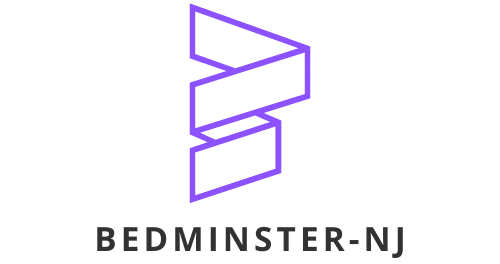How Is AI Transforming Predictive Maintenance in Manufacturing?

The manufacturing industry is no stranger to the disruptive power of artificial intelligence (AI). This technology has revolutionized many aspects of manufacturing operations, from production efficiency to quality management. Among these, one of the most profound impacts of AI can be seen in the realm of predictive maintenance.
The Shift from Reactive to Predictive Maintenance
To truly understand the impact of AI on predictive maintenance, it’s important first to appreciate the shift from traditional reactive maintenance to the more proactive, predictive approach.
A lire en complément : What Role Does AI Play in Enhancing the Quality of Online Education?
Reactive maintenance, as the term implies, is a strategy that involves responding to equipment problems only after they occur. While this approach might seem cost-effective at first glance, over time, the expenses associated with unexpected equipment failures and downtime can add up, making a significant dent in a manufacturing company’s bottom line.
Predictive maintenance, on the other hand, seeks to anticipate equipment failures before they happen. This is achieved by collecting and analyzing data from equipment during normal operations. This data-driven approach enables manufacturers to schedule maintenance activities at the most opportune times, significantly reducing unplanned downtime and its associated costs.
Sujet a lire : Can AI Algorithms Predict Epidemic Outbreaks With Greater Accuracy?
The Role of AI in Predictive Maintenance
The shift to predictive maintenance would not be possible without the advent of AI. Artificial intelligence, with its capacity to process vast amounts of data, plays a crucial role in making predictive maintenance a reality for the manufacturing industry.
AI-driven analytics tools can process real-time data from various equipment sensors, turning raw data into actionable insights. These insights enable manufacturers to predict when their machinery is likely to break down or perform below par, allowing them to take appropriate preventive measures. This can significantly boost the efficiency of manufacturing operations, as well as improve the quality of the products being manufactured.
The Impact of AI on Maintenance Management
AI is not only transforming how maintenance is performed; it’s also revolutionizing the way maintenance activities are managed.
With AI-driven maintenance management systems, manufacturers can automate many routine tasks, freeing up valuable time for maintenance personnel to focus on more complex issues. These systems can also provide real-time updates on equipment status, so managers can make informed decisions about when and where to deploy their maintenance resources. This results in more efficient use of resources and can significantly reduce maintenance costs.
Analytics: The Heart of AI-Driven Predictive Maintenance
The successful implementation of predictive maintenance hinges on the ability to collect, store, and analyze data. This is where AI’s analytical capabilities come into play.
AI-driven analytics platforms can process huge volumes of data from multiple sources in real time. They can identify patterns and trends that would be impossible for a human to discern. This level of analysis is key to accurately predicting equipment failures and planning maintenance activities.
Furthermore, these platforms can continuously learn and improve their predictive accuracy through machine learning algorithms, making them an indispensable tool for any manufacturer looking to implement a predictive maintenance strategy.
The Future of Predictive Maintenance Is AI
The impact of AI on predictive maintenance is profound and far-reaching, and we are only just beginning to scratch the surface of its potential. As AI technologies continue to evolve and improve, they will undoubtedly play an even more central role in predictive maintenance.
One area where we can expect to see significant advancements is in the realm of predictive analytics. We can anticipate that future AI-driven analytics platforms will be able to predict equipment failures with even greater accuracy, and much further in advance. This will enable manufacturers to plan their maintenance activities more efficiently, further reducing downtime and maintenance costs.
The manufacturing industry stands on the edge of a new era, one where AI-driven predictive maintenance is the norm rather than the exception. This new approach has the potential to revolutionize the industry, ushering in unprecedented levels of efficiency and cost savings. And while there are still challenges to overcome, the future of predictive maintenance looks bright indeed.
Harnessing AI for Enhanced Decision Making in Predictive Maintenance
AI’s influence in the world of predictive maintenance extends beyond mere data analysis. One of the significant advantages of AI lies in its ability to improve decision making.
By synthesizing complex data sets and revealing actionable insights, AI can help manufacturers make informed decisions about their maintenance strategies. This is crucial in optimizing operational efficiency and minimizing downtime. The use of AI in predictive maintenance equips manufacturers with a proactive approach, enabling them to anticipate and address potential equipment failures before they cause significant disruption.
AI’s decision-making capabilities are made possible through machine learning. Through learning algorithms, the system can detect patterns, analyze trends, and make accurate predictions about future equipment performance. This goes beyond merely highlighting potential problems; AI can also suggest optimal solutions based on its analysis.
Moreover, AI can improve decision-making by providing real-time data. This is particularly important in the manufacturing industry, where timing is often critical. With AI, manufacturers can receive instant updates about equipment status, allowing them to act swiftly and efficiently.
In addition, the integration of AI in predictive maintenance can lead to substantial cost savings. By reducing the frequency of unplanned downtime and enhancing the efficiency of maintenance processes, AI can contribute significantly to a manufacturer’s bottom line.
AI: Revolutionizing Quality Control and Supply Chain Management
The influence of AI in predictive maintenance isn’t confined to the realm of equipment management. It also plays a pivotal role in quality control and supply chain management, two crucial aspects of manufacturing processes.
Under quality control, AI’s precision and capacity for real-time data analysis can significantly enhance accuracy. By detecting potential defects or inconsistencies early, manufacturers can take proactive measures to ensure the quality of their products. AI can also help in setting quality standards by analyzing historical data and predicting future trends.
In supply chain management, AI-powered predictive maintenance can lead to better demand forecasting. By analyzing trends and patterns in equipment performance, AI can help predict production capabilities, allowing manufacturers to manage their supply chain more efficiently.
Moreover, the integration of AI in these areas can further contribute to cost savings. By improving quality control, manufacturers can reduce waste and rework. In supply chain management, better demand forecasting can lead to optimized inventory levels, reducing storage costs and improving customer satisfaction.
Conclusion: Embracing the AI-Powered Predictive Maintenance Revolution
From enhancing decision-making and operational efficiency to transforming quality control and supply chain management, the potential of AI in predictive maintenance is truly transformative. As such, manufacturers who are proactive in embracing this revolution stand to gain a competitive edge in today’s data-driven world.
However, it’s important to remember that to fully harness the power of AI, manufacturers need to invest in the right tools, platforms, and training. AI is a powerful tool, but its effectiveness ultimately lies in how well it is integrated and utilized.
It is a thrilling era for the manufacturing industry. As AI continues to evolve and innovate, so too does the potential for even more significant efficiency gains and cost savings. The future of predictive maintenance is undoubtedly AI-powered, and those who adapt will reap the benefits. This is not just a trend; it is the new standard for manufacturing processes. The era of AI-powered predictive maintenance has arrived, and it’s here to stay.
